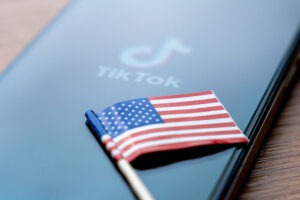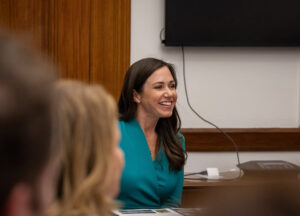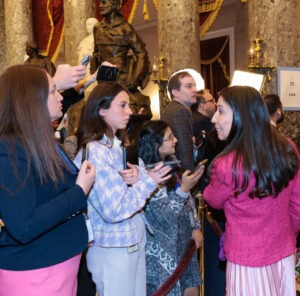Scroll, Like, Vote.
Published on October 23, 2025, at 12:04 p.m.
by Parker Schell.
From live debates to viral videos, social media has completely changed how personable politicians can be. So where is the line? Is the goal to be a politician or an influencer?

TikTok was once an app for dance trends and funny videos–now it’s how 1 in 5 Americans regularly get their news. Political communications professionals are having to rewrite their messages and come up with new strategies for the 136 million people who aren’t willing to watch an hour-long debate or read a multi-page policy plan. “Social media has also given these professionals direct communication with voters, without having to be mediated through a journalist or press release,” according to Dr. Cynthia Peacock, associate professor in the Department of Communication Studies at the University of Alabama. The question is no longer whether or not to use social media, but how.
Social media has increased the need to see politicians in a more relatable way, and most politicians are already using this strategy in their campaigns. According to Anastasia Denisova, with Westminster Papers in Communication and Culture, “We can see in the examples of Trump, Johnson, Salvini and many popular, or populist, politicians, how eagerly they manipulate the public by speaking in one-liners, or being recorded engaging in weird or ‘too’ relatable activities – all those actions that can help their message and their persona ‘go viral’. We will see more viral politics in the years to come.”

Sen. Katie Britt, R-A.L., and her team have leaned into short-form video as a way to connect with today’s social media audiences. “We have been moving toward video content for so long,” says, Grace Evans, Britt’s communications director. One of their most effective tools is Capitol Conversations, a selfie-style video where Britt explains policy updates and current issues directly to viewers. The informal, selfie format helps break down complex legislative topics and make them feel more approachable, which is perfect for the fast-paced, scrollable world of TikTok and Instagram.
For Washington Examiner congressional reporter Lauren Green, using TikTok as a tool for political communication came by accident. Green first gained traction on the platform with her @laurenoncapitolhill outfit-of-the-day (OOTD) videos featuring different members of Congress. Some of these OOTDs gained hundreds of thousands of views. These videos seemed to appeal to Gen Z voters because of their trendy and lighthearted nature, which is in stark contrast to how people tend to view politicians. It turns out, bipartisan fashion is easier to achieve than bipartisan policy.
While this may be a positive way of using social media in political communications, there are also downsides. Green notes that users are rarely exposed to opposing viewpoints. While this keeps audiences highly engaged, it also deepens political divides and makes bipartisan conversation increasingly difficult.

“I think that the polarization and the partisanship we see on TikTok is so anti the other side, and it’s never been that way until now,” says Green.
TikTok gives communicators direct access to young audiences, but its algorithm favors flashy, partisan and viral content over thoughtful discussion. This pushes young voters away from listening to anything from the other side of the aisle. From a PR perspective, this means political messages must be designed not just to inform, but to stand out in the already oversaturated for-you-page. The short-form nature of TikTok encourages campaigns and organizations to frame messages in ways that are quick, emotional and shareable—sometimes at the expense of policy depth. Yet for Gen Z voters, who increasingly rely on platforms like TikTok for news, these bite-sized formats may be their primary exposure to politics, shaping both their perceptions and having an impact on their civic engagement.
For Gen Z voters, this also poses the question of who are they listening to? In the 2024 election, many celebrities and influencers used social media to back presidential candidates. However, this chatter doesn’t stop at the campaign trail. Some used their platforms to voice their opinions on trending issues. Taylor Swift used her Instagram to encourage her 272 million followers to register to vote. Afterward, the nonpartisan nonprofit Vote.org recorded more than 35,000 registrations, according to NPR. These endorsements are one of the many ways politicians and their communications teams can increase their engagement with this generation and use voices other than their own to grab Gen Z’s attention.
The impact of social media has changed how we operate in every facet of life, and politics is no exception. For political communications, it’s reshaping how young voters consume news, form opinions and ultimately decide who gets their vote. It’s no longer just who is on voters’ ballot, it’s who’s on their feed.




